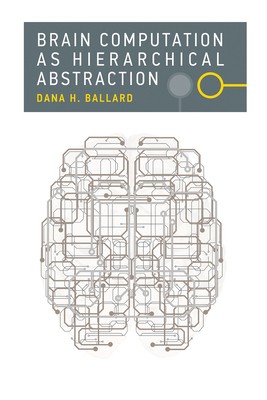
- We will send in 10–14 business days.
- Author: Dana H Ballard
- Publisher: MIT Press
- ISBN-10: 0262534126
- ISBN-13: 9780262534123
- Format: 15.2 x 22.9 x 3.2 cm, softcover
- Language: English
- SAVE -10% with code: EXTRA
Reviews
Description
An argument that the complexities of brain function can be understood hierarchically, in terms of different levels of abstraction, as silicon computing is.The vast differences between the brain's neural circuitry and a computer's silicon circuitry might suggest that they have nothing in common. In fact, as Dana Ballard argues in this book, computational tools are essential for understanding brain function. Ballard shows that the hierarchical organization of the brain has many parallels with the hierarchical organization of computing; as in silicon computing, the complexities of brain computation can be dramatically simplified when its computation is factored into different levels of abstraction.
Drawing on several decades of progress in computational neuroscience, together with recent results in Bayesian and reinforcement learning methodologies, Ballard factors the brain's principal computational issues in terms of their natural place in an overall hierarchy. Each of these factors leads to a fresh perspective. A neural level focuses on the basic forebrain functions and shows how processing demands dictate the extensive use of timing-based circuitry and an overall organization of tabular memories. An embodiment level organization works in reverse, making extensive use of multiplexing and on-demand processing to achieve fast parallel computation. An awareness level focuses on the brain's representations of emotion, attention and consciousness, showing that they can operate with great economy in the context of the neural and embodiment substrates.
EXTRA 10 % discount with code: EXTRA
The promotion ends in 18d.10:48:42
The discount code is valid when purchasing from 10 €. Discounts do not stack.
- Author: Dana H Ballard
- Publisher: MIT Press
- ISBN-10: 0262534126
- ISBN-13: 9780262534123
- Format: 15.2 x 22.9 x 3.2 cm, softcover
- Language: English English
The vast differences between the brain's neural circuitry and a computer's silicon circuitry might suggest that they have nothing in common. In fact, as Dana Ballard argues in this book, computational tools are essential for understanding brain function. Ballard shows that the hierarchical organization of the brain has many parallels with the hierarchical organization of computing; as in silicon computing, the complexities of brain computation can be dramatically simplified when its computation is factored into different levels of abstraction.
Drawing on several decades of progress in computational neuroscience, together with recent results in Bayesian and reinforcement learning methodologies, Ballard factors the brain's principal computational issues in terms of their natural place in an overall hierarchy. Each of these factors leads to a fresh perspective. A neural level focuses on the basic forebrain functions and shows how processing demands dictate the extensive use of timing-based circuitry and an overall organization of tabular memories. An embodiment level organization works in reverse, making extensive use of multiplexing and on-demand processing to achieve fast parallel computation. An awareness level focuses on the brain's representations of emotion, attention and consciousness, showing that they can operate with great economy in the context of the neural and embodiment substrates.


Reviews